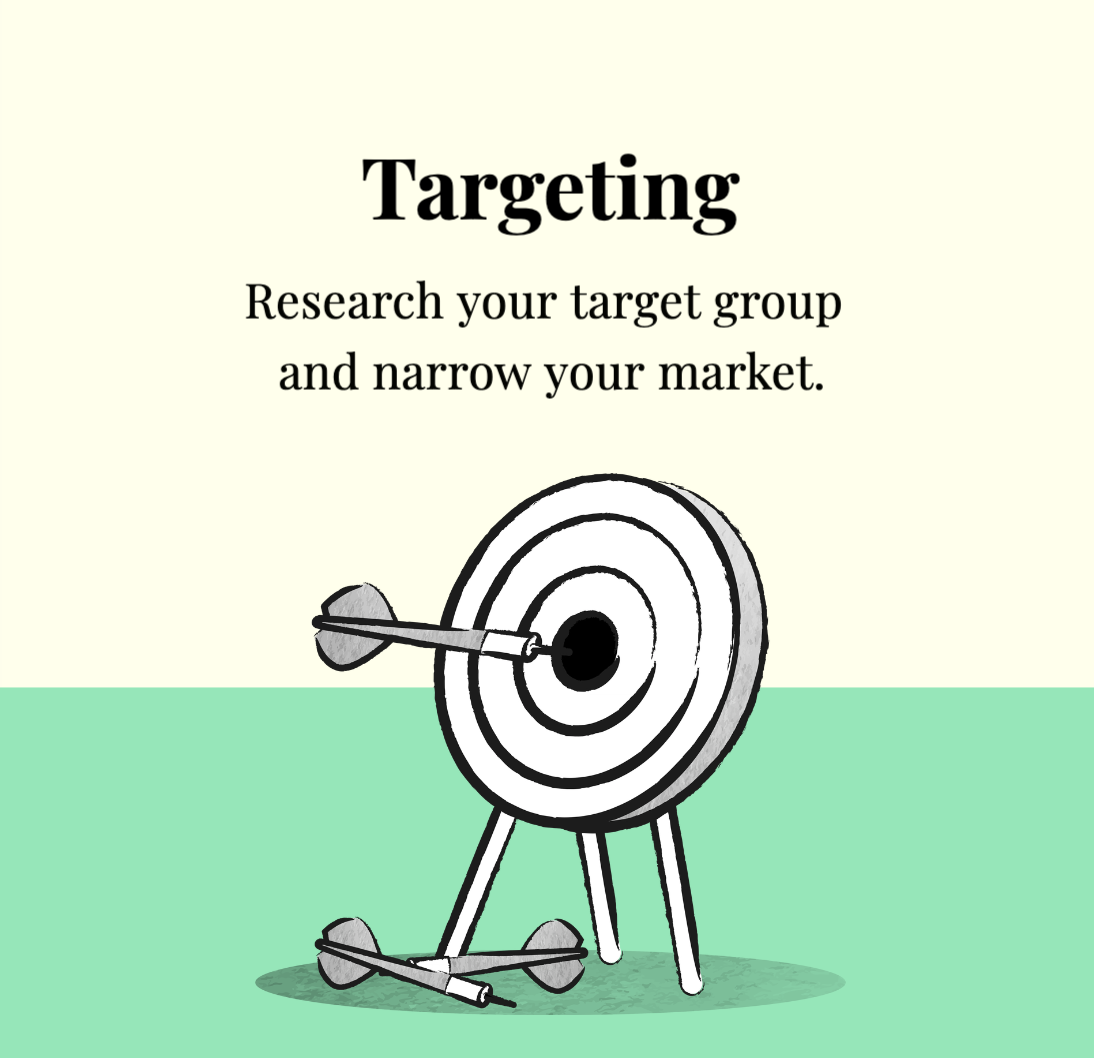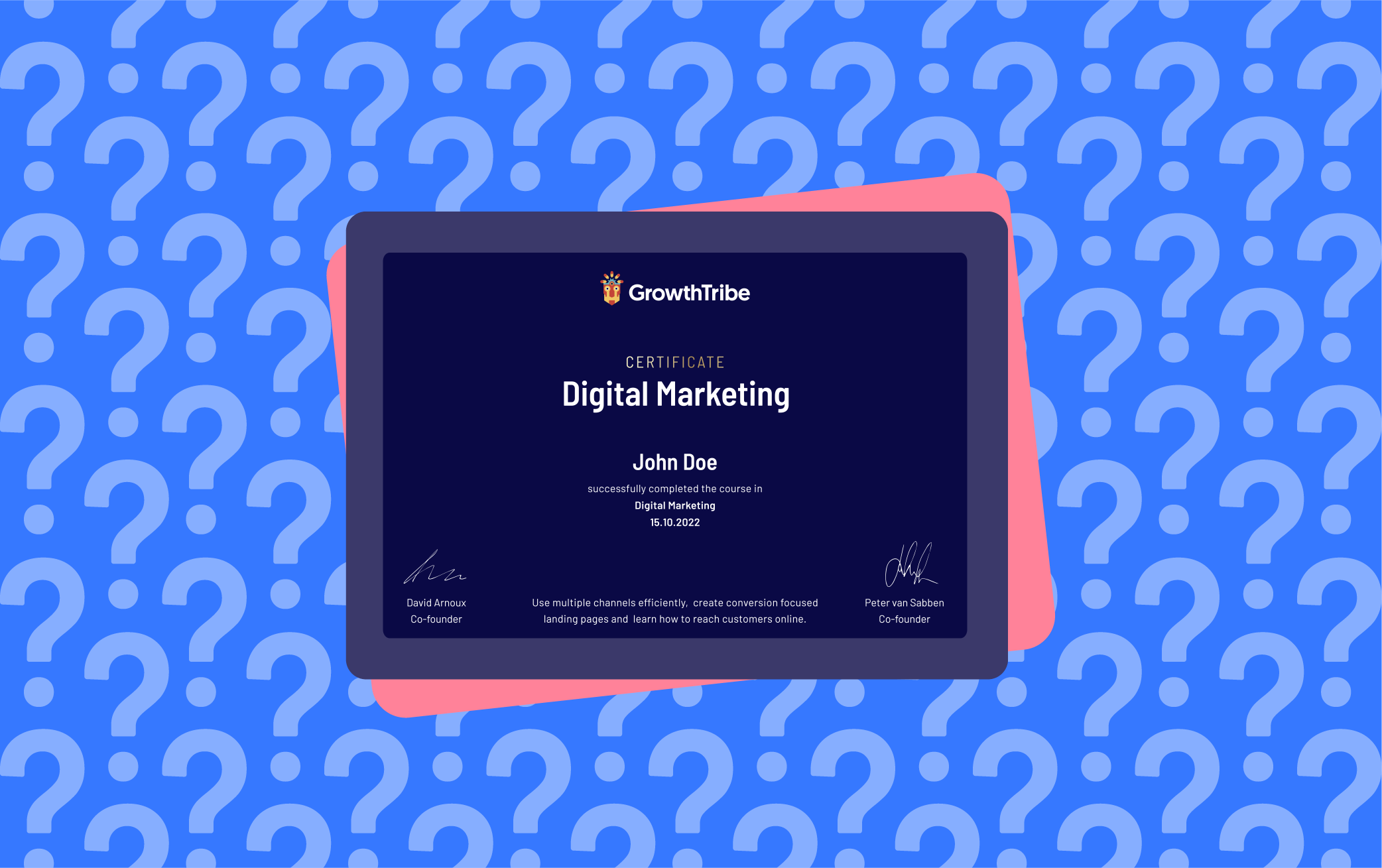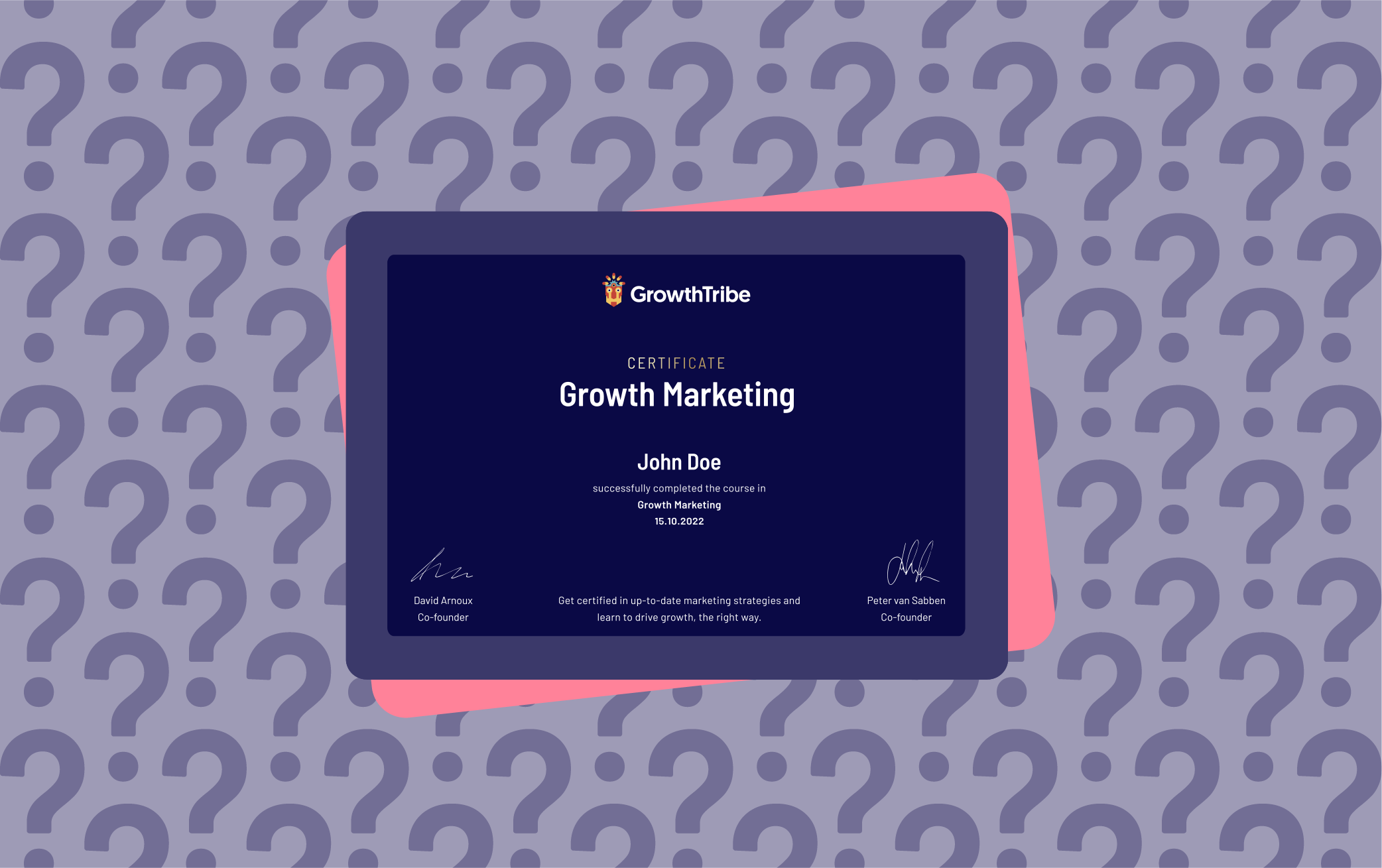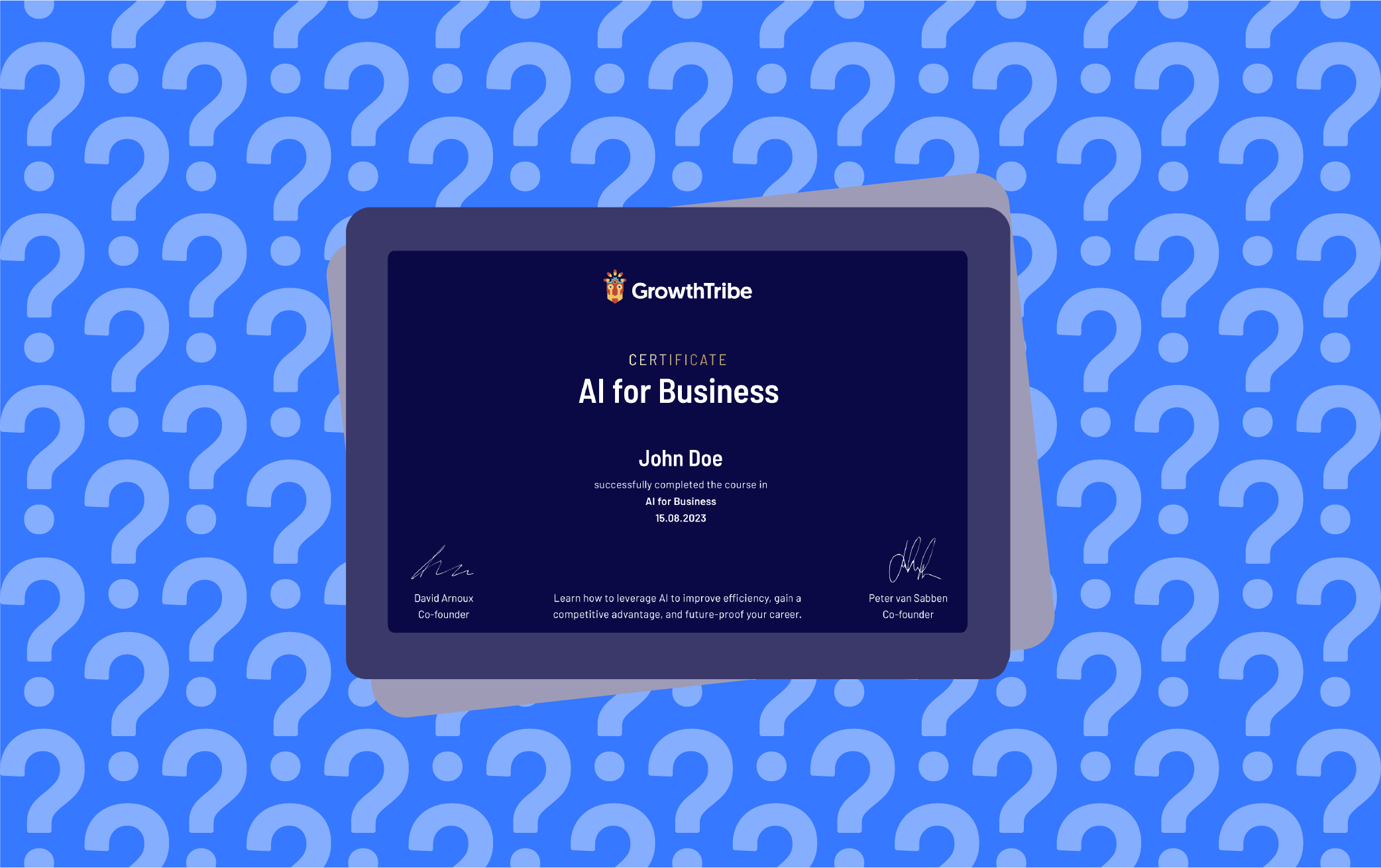2024 E-commerce Marketing Strategies

Who doesn't want to increase traffic and conversions in their business platform? But for that, you need the right strategies for your target audience and to secure potential customers.
We gathered 9 e-commerce marketing tactics to help you reach a wider audience and retain customers.
Tables of contents:
1. A definition of e-commerce marketing
2. What are some different types of E-commerce Marketing?
3. Here are 9 E-commerce Marketing Strategies
- Analyse competitors
- Enhance SEO efforts
- Collaborate and engage with influencers
- Embrace personalisation
- Implement social media marketing strategies
- Utilise email marketing campaigns
- Simplify the customer experience
- Give a reward to loyal customers
- Highlight other interested users
6. Want to learn more about digital marketing?
A definition of e-commerce marketing
So, you've got an online store, and you're looking to grow your business, right?
Well, you're in the right place.
Let's talk e-commerce strategies – simple, effective ways to get more people buying from your store.
First off, let's break it down: e-commerce marketing is a way to attract more customers to your online shop, encourage purchases and hopefully keep coming back for more.
No need for complex strategies– we're keeping it actionable.
What are some different types of E-commerce Marketing?
E-commerce marketing is a multifaceted approach that uses different channels to reach and engage potential customers.
In today's digital landscape, businesses rely on a diverse mix of strategies to drive traffic, generate leads, and ultimately boost sales.
Here's a breakdown of some key channels within e-commerce marketing:
-
Social Media Marketing: With billions of users worldwide, social media platforms provide a vast landscape for e-commerce businesses to connect with their target audience.
Through strategic content creation, community engagement, and targeted advertising, brands can cultivate a loyal following, drive traffic to their website, and encourage conversions. - PPC (Pay-Per-Click) Advertising: PPC advertising offers a highly targeted approach to reaching potential customers through platforms like Google Ads and social media ads.
By choosing relevant keywords and demographics, businesses can ensure their ads appear to users actively seeking their products or services, driving traffic and increasing conversions. -
SEO (Search Engine Optimisation): Ranking prominently in search engine results is crucial for driving organic search and traffic to e-commerce websites.
By optimising product pages, blog posts, and other content for relevant keywords and improving site structure and performance, businesses can increase their visibility and attract qualified leads actively searching for their products or services. - Email Marketing: Email remains one of the most effective tools for e-commerce businesses to nurture leads and retain customers.
Through personalised and targeted campaigns, businesses can deliver relevant content, promotions, and product recommendations directly to subscribers' inboxes, fostering a deeper connection and driving repeat purchases. - Content Marketing: High-quality content is essential for attracting and engaging audiences in the crowded online marketplace.
From blog posts and product guides to videos and infographics, compelling content not only educates and entertains but also helps establish a brand as an authority in its niche, driving organic traffic and building trust with potential customers. -
Local Marketing: For e-commerce businesses with physical locations or targeting specific geographic regions, local marketing tactics are essential for reaching nearby customers.
This includes optimising targeting local keywords and leveraging location-based advertising to drive foot traffic and online sales.
Here are 9 E-commerce Marketing Strategies
Now, let's have a look at these 9 e-commerce marketing tactics to make your business even more successful:
- Analyse competitors
- Enhance SEO efforts
- Collaborate and engage with influencers
- Embrace personalisation
- Implement social media marketing strategies
- Utilise email marketing campaigns
- Simplify the customer experience
- Give a reward to loyal customers
- Highlight other interested users
1. Analyse competitors
Analysing competitors' websites is an important aspect of e-commerce marketing strategy for achieving success.
By analysing their online platforms, businesses can uncover invaluable insights into their strategies, shedding light on their strengths and pinpointing areas that may require refinement.
This thorough analysis offers a comprehensive view of market dynamics, revealing trends, product positioning, pricing strategies, website functionality, and marketing approaches.
Examining competitors' websites serves as a strategic exercise in identifying potential gaps or shortcomings in their offerings.
This understanding provides a valuable opportunity for businesses to fine-tune their own strategies, capitalising on areas of weakness or dissatisfaction among consumers.
And, by keeping a keen eye on the competition, companies are better equipped to adapt swiftly to market shifts and emerging trends, ensuring they remain agile and responsive in their approach.
2. Enhance SEO efforts
Boosting SEO efforts is a key move in e-commerce marketing strategy, vital for ramping up online visibility, pulling in organic traffic, and ultimately, beefing up sales.
Here's a deeper look at why giving SEO a priority can be a game-changer for e-commerce ventures:
First off, ramping up SEO ensures that your online shop gets the spotlight on search engines like Google.
By smartly composing website content, product descriptions, and tags to match popular search terms, your site climbs higher in search results.
This means more eyeballs on your products from people who are actively looking for what you're selling.
But it's not just about keywords. Your site's gotta be a smooth operator too.
Fast load times, mobile-friendly design, and easy navigation aren't just user-friendly perks – they also tell search engines that your site's legit and worth ranking higher.
Then there's the off-page material.
Building links from other reputable sites and being active on social media don't just boost your brand's profile – they also tell search engines that you're a big deal in your niche.
Optimising your Google My Business listing and getting rave reviews from local customers can help your shop shine in local search results, driving more foot traffic to your doorstep and sales through your site.
Bottom line?
Putting SEO front and centre in your e-commerce strategy pays off big time.
3. Collaborate and engage with influencers
Teaming up with influencers is a savvy move in e-commerce marketing, offering a fresh way to connect with your audience and drive sales.
First off, influencers have serious power over their followers.
When they endorse your products, it's like getting a seal of approval from a trusted source.
This kind of authentic endorsement can work wonders for building brand awareness and driving sales.
Plus, influencers bring a whole new audience to the table.
Their followers are often super engaged and loyal, so when an influencer talks about your products, you have new possibilities for potential customers.
Influencers can create content that sparks conversations and gets people talking about your products in a way that feels natural and genuine.
And don't forget about the creative power of influencers.
Whether it's stunning photos, entertaining videos, or engaging stories, influencers know how to make your products look irresistible.
But here's the key: it's gotta be a good fit.
Look for influencers whose values align with your brand and whose audience matches your target market.
Authenticity is key – if it feels forced or fake, it'll backfire.
4. Embrace personalisation
Embracing personalisation in e-commerce marketing is a strategic shift that can yield remarkable results.
Why?
By tailoring the shopping experience to individual customers and defining target customers, businesses can forge deeper connections, drive higher conversions, and outperform competitors.
You can also create buyer personas for targeted marketing and improving product development.
Personalisation isn't just about making customers feel special; it's about delivering tangible benefits for the business.
Studies consistently show that personalised experiences lead to increased conversion rates, higher order values, and greater customer satisfaction.
From customised product recommendations to personalised email campaigns, every touchpoint along the customer journey should be personalised to meet their needs and preferences.
In today's competitive e-commerce landscape, personalisation isn't just a luxury – it's a necessity for success.
5. Implement social media marketing strategies
In social media marketing, platforms such as Instagram, TikTok, and LinkedIn are powerful tools for promoting brands, products, or services, fostering customer relationships, and driving traffic and sales to e-commerce sites.
And how so? Due to these key factors:
-
Massive User Base: These platforms boast billions of active users worldwide, providing businesses with unprecedented access to a vast and diverse audience.
By leveraging the reach of social media, businesses can connect with potential customers across demographics, geographies, and interests. -
Targeted Advertising: Social media platforms offer sophisticated targeting options that allow businesses to reach specific segments of their audience based on factors like age, gender, location, interests, and behaviours.
This targeted approach ensures that marketing messages are delivered to the most relevant audience, maximising their effectiveness and ROI. -
Engagement and Interaction: Social media facilitates direct engagement and interaction between businesses and their audience in real-time.
Through likes, comments, shares, and direct messages, businesses can foster meaningful relationships with customers, address inquiries or concerns promptly, and gather valuable feedback to inform their marketing strategies. -
Visual Content: Platforms like Instagram and TikTok prioritise visual content, such as images and videos, making them ideal for showcasing products or services in a visually appealing and engaging manner.
High-quality visuals in social media posts grab attention, evoke emotions, and drive engagement, increasing brand visibility and driving traffic to e-commerce sites. -
User-generated Content: Social media encourages user-generated content, where satisfied customers share their experiences, reviews, and recommendations with their networks.
Harnessing user-generated content through features like hashtags, reviews, and tagged posts enhances authenticity and credibility, influencing purchase decisions and driving sales. -
Community Building: Social media enables businesses to build and nurture communities around their brand, fostering a sense of belonging and loyalty among customers.
By facilitating discussions, hosting Q&A sessions, and sharing behind-the-scenes content, businesses can strengthen connections with their audience and cultivate brand advocates who champion their products or services.
6. Utilise email marketing campaigns
No, email marketing is not dead.
Simply collecting email addresses isn't sufficient.
To make email marketing a truly effective e-commerce strategy, you must consistently deliver valuable content to your subscribers.
Numerous occasions present ideal opportunities for sending emails that your subscribers will genuinely appreciate:
- Send a warm welcome email immediately after a customer makes a purchase.
- Offer exclusive promo codes and free gifts to show appreciation for their loyalty.
- Send regular newsletters and an email list to keep subscribers informed about new discount offers, product recommendations, and relevant company updates.
- Share helpful content to assist customers in making the most of their recent purchases.
- Launch a Buy One, Get One (BOGO) campaign around the holidays to encourage self-gifting during the festive season.
- Extend gratitude to your most valuable customers by sending them a personalised thank-you note.
- Seek feedback from visitors who browse your site but don't complete a purchase.
So, implementing effective email marketing strategies helps businesses nurture customer relationships, drive sales, and improve overall customer satisfaction, ultimately contributing to long-term success and growth in the e-commerce sector.
7. Simplify the customer experience
Simplifying the customer experience is a powerful e-commerce marketing strategy that can bring numerous benefits to businesses.
By offering a streamlined and user-friendly online shopping experience, businesses can reduce friction in the buying process, making it easier for customers to find and purchase products.
This shows that the business values its customers' time and convenience, leading to higher levels of satisfaction and loyalty.
And, simplifying the online shopping journey can help reduce abandonment rates, improve brand perception, and enhance the mobile shopping experience.
Clear product descriptions, intuitive navigation, and easy-to-find information empower customers to make quick and informed choices, driving conversions and fostering sustainable growth.
By prioritising simplicity and usability across all touchpoints of the customer journey, businesses can create a positive and seamless shopping experience that delights customers and maximises their chances of success in the competitive e-commerce landscape.
8. Give a reward to loyal customers
Focusing on customer retention can help boost online sales.
One effective method is via a customer loyalty programme, which benefits both businesses and customers.
These programmes offer incentives for repeat purchases and referrals, keeping the brand top of mind with automated reminders.
The beauty of loyalty programmes lies in their flexibility.
Businesses can tailor rewards to suit their customers' preferences, whether through points for discounts, free shipping, or gifts.
So, rewarding loyal customers not only encourages repeat purchases but also fosters brand advocacy and positive word-of-mouth referrals.
9. Highlight other interested users
Scarcity often increases demand.
Highlighting the number of users interested in a product can significantly impact how customers perceive its value.
By showcasing the level of interest from others, it infuses a sense of exclusivity and desirability in the product.
And, this tactic creates a compelling sense of urgency, motivating customers to act swiftly and purchase before the product runs out.
This fear of missing out (FOMO) can drive conversions and increase sales, as customers are more inclined to take immediate action when they perceive limited availability.
In essence, highlighting other interested users is a strategic e-commerce marketing approach that leverages scarcity and urgency to influence customer behaviour and drive sales.
Want to learn more about digital marketing?
You are in the right place!
In today's digital age, digital marketing is a dynamic field gaining substantial momentum across industries.
As technology progresses, digital marketing strategies are becoming increasingly feasible and integral to daily operations.
This course will teach you about digital marketing strategies and tools to turbocharge business growth online.
6 modules | 61 lessons | 23 videos | 6 tests | 6 exercises
- Module 1 - Introduction to Digital Marketing
- Module 2 - Digital marketing tracking and analytics
- Module 3 - Boost organic growth with content marketing strategies
- Module 4 - How to target your audience using paid media
- Module 5 - How to retarget your audience
- Module 6 - How to optimise your landing pages

Conclusion
Successful marketing strategies come in many different ways.
Whether it is from social media channels, marketing channels, or click-through rates, the type of content related to your e-commerce strategy is crucial to get stable and ideal customers to your business and reach your marketing goals.
Promotional tactics also really help, you can even get a little help from social media influencers to boost your business and get a wide range of new potential customers.
Plus, having a reliable customer base is crucial for e-commerce strategies to succeed, as customer reviews and user experience are always looked upon in Google shopping reviews.
If it is within your marketing budget, you can get extra and give out special offers to increase online shopping carts, ensuring a checkout process and rewarding loyal customers.
So, what are you waiting to use some (or all) of these tips to improve your digital marketing strategy?
FAQ
1. What is e-commerce marketing?
E-commerce marketing refers to the strategies and techniques used by online businesses to attract, engage, and convert customers on digital platforms. It involves various tactics such as SEO, social media marketing among promotional messages, email marketing, content marketing, and more, tailored specifically to the e-commerce landscape.
2. What are the different types of e-commerce marketing?
E-commerce marketing encompasses several approaches tailored to different stages of the customer journey. These include marketing tools such as Search Engine Optimisation (SEO), Pay-Per-Click (PPC) advertising, social media marketing, email marketing, influencer marketing, content marketing, affiliate marketing, and conversion rate optimization (CRO).
3. What key takeaways can be drawn from this discussion on e-commerce strategies in 2024?
The key takeaways from this discussion on e-commerce strategies in 2024 include the importance of embracing technological advancements, prioritising customer experience across all touchpoints, increasing the engagement rate, leveraging data-driven insights for targeted marketing efforts, and staying adaptable to evolving consumer behaviours and preferences. By implementing these strategies, e-commerce businesses can effectively drive growth and stay competitive in the rapidly evolving digital landscape.
Categories
- Business & Innovation (89)
- Growth & Marketing (66)
- Data & Analytics (29)
- Alumni Stories (11)
Related articles
Watch related webinar
How To Fix a ChatGPT Network Error Code
.png)
Latest articles
Agile Decoded: Answering 11 Key Questions on Agile Marketing
It's time for an agile approach! Stemming from the principles of...
The Top 11 Questions About our Digital Marketing Course Answered
I know you are probably googling around digital marketing...
The Top 11 Questions About our Growth Marketing Course Answered
Curious about our Growth Marketing Course? Wondering how it can...
AI in Business: Your 11 Essential Questions Answered
Artificial intelligence (AI) has emerged as a game-changer for...

Watch related webinar
How To Fix a ChatGPT Network Error Code
.png)





















